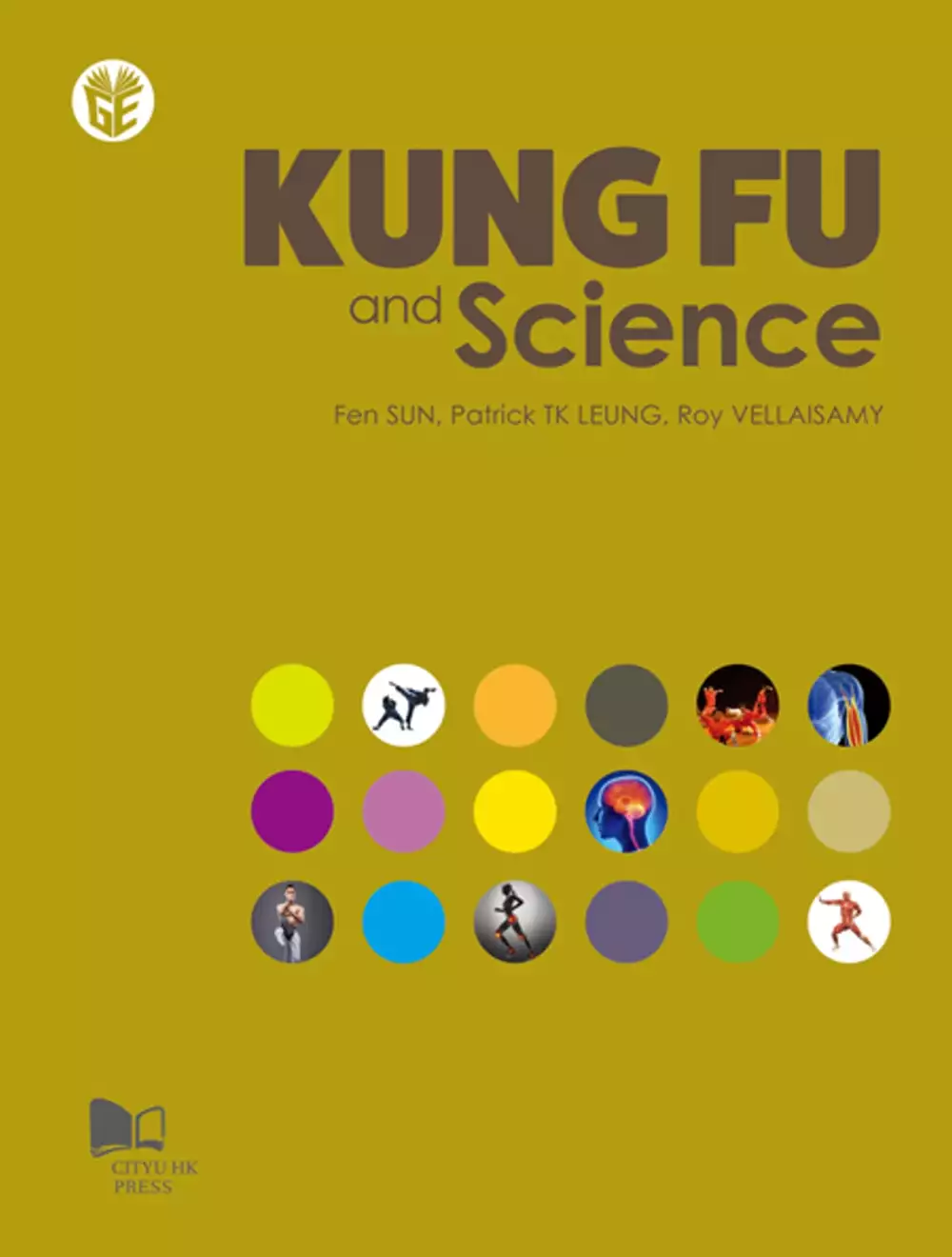Renewable energy Chi的問題,透過圖書和論文來找解法和答案更準確安心。 我們找到下列特價商品、必買資訊和推薦清單
Renewable energy Chi的問題,我們搜遍了碩博士論文和台灣出版的書籍,推薦FenSUN,RoyVELLAISAMY,PatrickTKLEUNG寫的 Kung Fu and Science 和Wong, Man-chung/ Dai, Ning-yi/ Lam, Chi-seng的 Parallel Power Electronics Filters in Three-phase Four-wire Systems: Principle, Control and Design都 可以從中找到所需的評價。
這兩本書分別來自香港城市大學 和所出版 。
國立陽明交通大學 永續化學科技國際研究生博士學位學程 孫世勝、鄭彥如所指導 吳杰畢的 用於染料敏化電池的無金屬有機染料之結構設計 (2021),提出Renewable energy Chi關鍵因素是什麼,來自於染料敏化太陽能電池、輔助受體對、二丁基芴基、D-A-π-A、環戊二噻吩、有機染料、弱光照明。
而第二篇論文國立陽明交通大學 機械工程系所 王啟川所指導 莫尼實的 超疏水性在結露狀況下對氣冷式熱交換器性能的影響 (2021),提出因為有 熱交換器、超疏水性鰭片、凝結水脫落、熱傳、節能的重點而找出了 Renewable energy Chi的解答。
Kung Fu and Science

為了解決Renewable energy Chi 的問題,作者FenSUN,RoyVELLAISAMY,PatrickTKLEUNG 這樣論述:
Kung Fu has evolved from a traditional means of defence to become a system of attacking and defending oneself, with or without weapons, exercising the body and maintaining good physical and mental health. As such, these practices have found an international following. Yet what has remain
ed a largely unexplored area is the scientific principles behind these martial arts. This book not only covers the brief history of Chinese martial arts, but also brings together the wisdom of a Kung Fu grand master with a scientist and teacher to explain the scientific reasons why Kung Fu is the
powerful practice that it is. Using the principles of physics, biomechanics and biology, with a number of drawings showing some basic postures of Kung Fu, the authors present a deep understanding of how the styles, the specific movements and methods of attack and defence operate.
用於染料敏化電池的無金屬有機染料之結構設計
為了解決Renewable energy Chi 的問題,作者吳杰畢 這樣論述:
摘要第三代光伏的染料敏化太陽能電池 (DSSC)的興起,造成在過去的三十年中被廣泛地探索,因為它們具有的獨特特性,例如成本低、製造工藝簡單、輕巧、柔韌性好、對環境友善,並且在弱光條件下,仍具備突破性的高效率。儘管, DSSCs 依然有許多須待優化的部分,但藉由光捕獲染料光敏劑的分子結構設計,在優化 DSSCs 性能參數方面扮演關鍵的作用。因此,尋找符合DSSC需求的光敏染料,是該研究領域的關鍵研究方向之一。本論文的最終目標是在標準日照和弱光條件下,尋找高效穩定的有機光敏染料。這項工作是藉由無金屬有機光敏劑的系統結構工程來完成的,針對分子結構設計與光電特性的關聯及DSSC的效能表現。在本論文中
,我們已經合成了各種新型光敏染料,並對這些無金屬有機光敏染料進行了逐步的結構修飾,例如在單個敏化染料中引入一對輔助受體,在 D-A-π-A 框架中引入龐大的芴基實體,並增加共平面性以及延伸喹喔啉染料主要框架的共軛。通過使用各種光譜、電化學和理論計算來研究這些光敏染料的結構性質,以符合它們在DSSC主要特徵之應用前景。最後,在本論文中,我們展示了一組無金屬有機光敏劑,其元件效率高,在標準太陽照射下的效率超過 9%,在 6000 lux 的弱光照下,效率超過 30%,這將是一個具有未來發展潛力的結構設計,可以在沒有共吸附劑的情況下實現高效率。
Parallel Power Electronics Filters in Three-phase Four-wire Systems: Principle, Control and Design

為了解決Renewable energy Chi 的問題,作者Wong, Man-chung/ Dai, Ning-yi/ Lam, Chi-seng 這樣論述:
Man-Chung Wong, received his B. Sc. and M. Sc. degrees in Electrical and Electronics Engineering from University of Macau (UM), Macao, China in 1993 and 1997 respectively and Ph.D. degree in Electrical Engineering from Tsinghua University, Beijing, China in 2003. He was a visiting fellow in Cambridg
e University, UK in 2014. He is now an Associate Professor in UM. His research interests are power electronics converters, pulse with modulation, PQ filters and hybrid PQ compensator for railway power supply system. He has co-authored over 100 papers and 6 patents (China and U.S.A). Recently, an ind
ustrial PQ filter platform was developed and installed in a practical power system based on his research results. Prof. Wong received Macao Young Scientific Award from Macau International Research Institute in 2000, Young Scholar Award of UM in 2001, Second Prize for Tsinghua University Excellent Ph
.D. Thesis Award in 2003 and Macao Science & Technology Invention Award (Third-Class) in 2012 and 2014.He was General Chair of IEEE TENCON 2015 in Macau. In 2014 2015, he was IEEE Macau Section Chair. Recently, he is North Representative of IEEE Region 10 Power and Energy Society and IEEE Macau PES/
PELS Joint Chapter Chair. NingYi Dai received her B.Sc. degree in Electrical Engineering from the Southeast University, Nanjing, China, in 2001, and the M.Sc. and Ph.D. degrees in Electrical and Electronics Engineering from University of Macau (UM), Macao, China, in 2004 and 2007, respectively. From
2007 to 2009, she was a Postdoctoral Fellow in UM. She is now an Assistant Professor in the Department of Electrical and Computer Engineering, UM.Dr. Dai has published over 60 journals and conference papers. She was co-author of 5 Chinese Patents. Her research interests include power electronics co
nverters, pulse with modulation, PQ conditioning for railway power supply system, renewable energy integration and microgrid.Dr. Dai was the co-recipient of Macao Science & Technology Invention Award (Third-Class) in 2012. She received the 4rd RIUPEEEC Merit Paper Award in 2006 and HuaWei Scholarshi
p in 2000. Dr. Dai is an IEEE Senior Member. She is the Chair of IEEE Macau Women in Engineering Affinity Group. Chi-Seng Lam received the B.Sc., M.Sc. and Ph.D. degrees in Electrical and Electronics Engineering from the University of Macau (UM), Macao, China, in 2003, 2006 and 2012 respectively. Fr
om 2006 to 2009, he was an E&M Engineer in UM. In 2009, he worked as a UM Power Electronics Laboratory Technician and started to pursue his Ph.D. degree, and completed it within 3 years. In 2013, he was a Postdoctoral Fellow in The Hong Kong Polytechnic University, Hong Kong, China. He is now an Ass
istant Professor in the State Key Laboratory of Analog and Mixed-Signal VLSI, UM. He has co-authored 2 Springer books, 1 US patent, 2 Chinese patents and over 50 journals and conference papers. His research interests include integrated power electronics controllers, power management ICs, PQ compensa
tors, renewable energy, etc. Dr. Lam was the receipt of Macao Science & Technology Invention Award (Third-Class) in 2014 and R&D Award for Postgraduates (Ph.D.) in 2012. He also received Macao Government Ph.D. Scholarship in 2009-2012, Macao Foundation Postgraduate Scholarship in 2003-2005 and the 3
rd RIUPEEEC Merit Paper Award in 2005. Dr. Lam is an IEEE Senior Member. He was/is the Secretary and Vice-Chair of IEEE Macau Section, and also the Secretary of IEEE Macau PES/PELS Joint Chapter.
超疏水性在結露狀況下對氣冷式熱交換器性能的影響
為了解決Renewable energy Chi 的問題,作者莫尼實 這樣論述:
濕空氣冷凝是熱管理系統中常見的過程,在冷凍空調循環中尤為重要,冷凝現象發生於當熱交換器,特別是蒸發器,在低於空氣露點的溫度下操作時。此現象將會導致鰭片側的冷凝液滴(膜)滯留(retention)與橋接(bridging),進而造成風機壓降與能耗的增加。本研究旨在開發一種超疏水熱交換器,通過其疏水特性,最大限度地減少冷凝水的滯留和橋接。本研究提出一種新型的超疏水性鰭片換熱器設計構想,採用傾斜鰭片排列以達到最小壓降和最大節能效果。本研究從熱傳與壓降性能的觀點切入,將新型超疏水性傾斜鰭片換熱器與其他換熱器作比較分析,分別為:超疏水水平鰭片換熱器、親水性傾斜鰭片換熱器、與親水性水平鰭片換熱器。此外,
本研究藉由改變不同的操作條件,如:進氣溫度、相對濕度和鰭片間距,對這四種換熱器進行性能測試。親水和超疏水換熱器中分別以膜狀冷凝和滴狀冷凝模式為主。由於其表面的高潤濕性,親水換熱器會有較大的液滴脫落直徑。相比之下,超疏水換熱器中發生的 Cassie-Baxter 液滴模式,促使了較小的液滴脫落直徑。本研究建立了一個力平衡模型來分析液滴脫落直徑,模型參數包括了表面張力、慣性力與重力對液滴的影響。本研究基於韋伯數(We)與邦德數(Bo)與液滴脫落直徑,引入了一個新的無因次參數( ),該無因次參數 可預測表面的凝結水脫落能力,在給定的鰭片間距下, 越小代表凝結水脫落能力越好。研究結果表明,滴狀冷凝的
超疏水換熱器在濕空氣下的冷凝熱傳性能相較膜狀冷凝的親水性換熱器並未有顯著的提升,此結果可歸因於非凝結性氣體效應。然而,在壓降方面,超疏水性換熱器與親水性換熱器相比,可帶來高達70%的壓降降低,大幅提升節能效果。壓降的降低歸因於聚結誘發的液滴跳躍現象,使得冷凝水連續脫落。